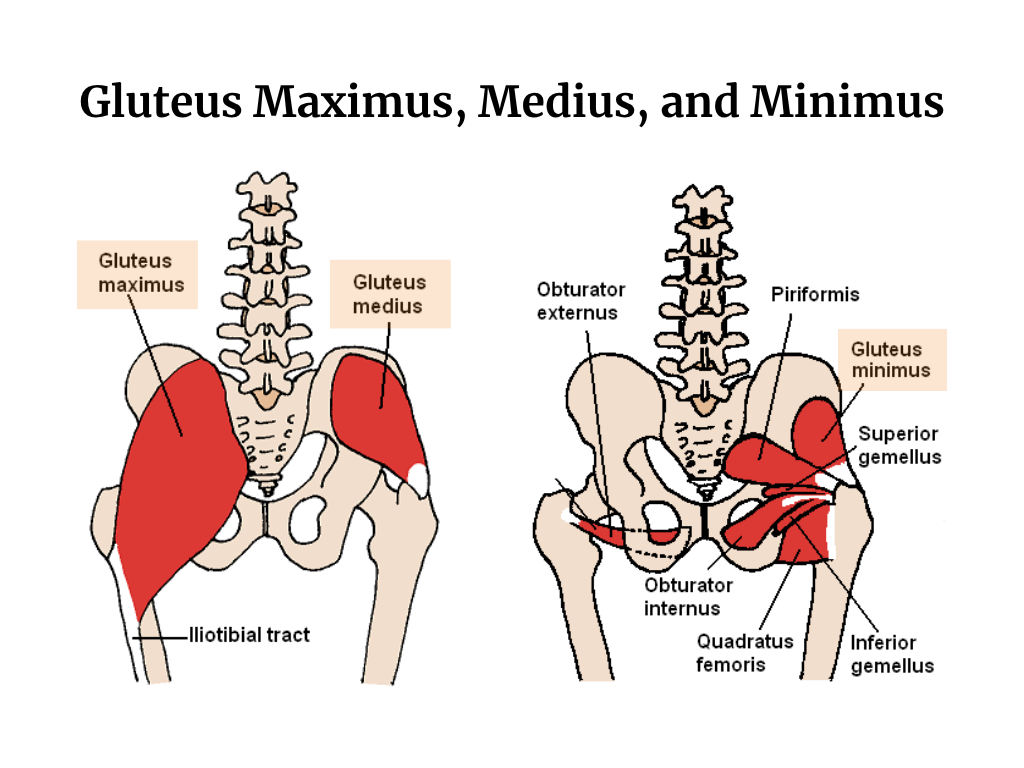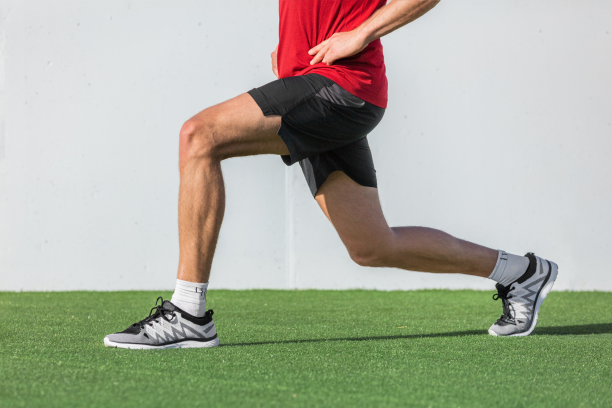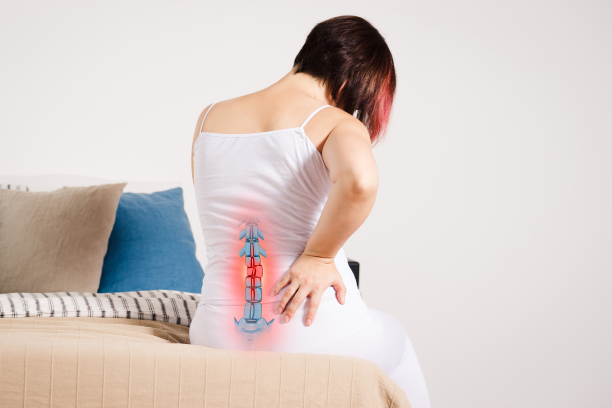You might not think much about your glutes until they stop doing their job. The gluteal muscles, particularly the gluteus maximus, medius, and minimus, play a crucial role in more than just aesthetic appeal or athletic performance. These muscles play a central role in stabilising your hips, pelvis, and spine. When they are weak or underactive, it doesn’t just affect how you sit or walk. It can trigger a chain reaction of poor movement patterns, increased spinal load, and, over time, chronic lower back pain.
Let’s explore how weak glutes contribute to back pain, what the science says about this hip-spine connection, and what you can do to strengthen these powerhouse muscles.
Understanding the Gluteal Muscles and Their Role
The gluteal group consists of three key muscles:
- Gluteus Maximus: The largest muscle, responsible for hip extension, standing, climbing, and lifting.
- Gluteus Medius: Helps with side-stepping and pelvis stabilisation during walking or running.
- Gluteus Minimus: Assists the medius in stabilisation and hip abduction.

Collectively, they support pelvic alignment, maintain upright posture, and reduce unnecessary stress on the lower spine. When these muscles are strong, they act as shock absorbers and force distributors. When they are weak, the burden shifts to your lower back.
What Happens When Glutes Are Weak?
Weak glutes don’t simply “do less.” They force other muscle groups, such as those in the lower back and hamstrings, to overcompensate. This imbalance affects:
- Pelvic alignment: Poor glute function can lead to anterior pelvic tilt, where the front of your pelvis drops and your lower back arches excessively.
- Walking gait: You may develop a waddling or uneven walking pattern, which adds stress to your lumbar spine.
- Load distribution: Without proper glute support, everyday movements such as standing, walking, lifting, and bending can put strain on the lower back.
Studies have shown that individuals with chronic low back pain often demonstrate gluteal weakness or inhibition. The connection is not merely anecdotal. It is backed by clinical research and biomechanical evidence.
The Hip-Spine Connection: A Two-Way Street
The hip and spine are closely linked through a biomechanical and neurological system called the lumbopelvic-hip complex. If one part is off balance, the others quickly follow. Here's how:
- Instability in the pelvis from weak glutes makes the lumbar spine work harder to stabilise your trunk, especially during movement.
- Poor hip mobility, caused by gluteal dysfunction, limits your ability to bend or rotate efficiently, shifting the strain upward to the back.
- Tight hip flexors often develop in individuals with weak glute muscles, further exacerbating the anterior pelvic tilt and increasing lumbar compression.
Instability in the pelvis from weak glutes isn’t the only issue. Knee instability can also affect spinal alignment, especially when the body tries to compensate during movement. Read more about the impact of knee instability on your lower back.
Signs That Your Glutes Might Be Weak
You don’t need a fancy gym test to assess your glutes. Here are some everyday signs that suggest your glutes may be underperforming:
- Your back aches after standing or walking for a short period.
- Climbing stairs feels unusually difficult or tiring.
- Your knees cave inwards during squats or while walking.
- You find it hard to balance on one leg.
- Your hips or lower back feel tight or sore after prolonged sitting.
Why Do Glutes Become Inactive?
Modern life is one of the biggest culprits. Here’s why your glutes might be asleep on the job:
- Too much sitting: Long hours at a desk lead to “gluteal amnesia,” where these muscles forget how to activate properly.
- Poor movement habits: Relying too much on your back or hamstrings during exercise or daily tasks can bypass the glutes.
- Lack of targeted exercise: Everyday walking isn't always enough. Without resistance-based activation, the glutes can weaken over time.
- Injury or pain: Past injuries to the hip, knee, or back can cause your body to subconsciously avoid using the glutes, leading to atrophy and compensation.
How Weak Glutes Lead to Lower Back Pain
Here’s a breakdown of the common mechanisms:
1. Overcompensation by the Lower Back
When glutes don’t fire properly, the lower back muscles step in to do the job of lifting, extending, and stabilising. This leads to overuse, fatigue, and eventually, chronic pain.
2. Loss of Pelvic Control
Without gluteal support, your pelvis may tilt forward or sideways. This misalignment can compress the spinal joints, irritate the lumbar discs, and lead to issues like sciatica.
3. Uneven Gait and Hip Drop
A disrupted gait can lead to compensation in both the hips and knees, further compounding stress on your back. If you are experiencing discomfort in both areas, explore the connection between knee and back pain.
4. Hamstring Dominance
Many people unknowingly use their hamstrings more than their glutes during exercises like squats and bridges. This overuse can pull the pelvis into an unnatural position, placing more strain on the lumbar spine.
Exercises to Activate and Strengthen Your Glutes
Strengthening your glutes doesn’t require heavy weights. It requires consistency and proper activation. Here are some physiotherapist-approved exercises to try:
- Glute bridges: Lie on your back with knees bent, squeeze your glutes, and lift your hips off the ground.
- Clamshells: Lie on your side, bend your knees, and open and close your legs like a clam to target the gluteus medius.
- Hip thrusts: Sit against a bench, place a weight on your hips, and drive upward through your heels.
- Lateral band walks: Use a resistance band around your thighs and step side-to-side to fire up your outer glutes.
- Step-ups: Use a low step and push through your heel to lift yourself up, keeping your spine neutral.
Always begin with bodyweight movements and progress to resistance training under professional guidance, especially if you have existing back issues.
Tips for Preventing Glute-Related Back Pain
- Limit prolonged sitting: Stand or walk for a few minutes every hour.
- Use proper posture: Avoid slouching or tucking your pelvis when sitting or standing.
- Incorporate mobility drills: Stretch your hip flexors and hamstrings regularly.
- Train movement patterns: Focus on hinging at the hips, not the spine, when bending or lifting.
- Seek professional help: A physiotherapist can assess your movement and prescribe tailored exercises.
Limiting prolonged sitting and supporting your posture with the right workstation setup can make a significant difference. Explore our guide to setting up an ergonomic workspace to help protect your glutes and spine.
When to See a Specialist
If your back pain is persistent, radiates down your legs, or worsens with movement, it's time to consult a healthcare provider. They can determine if your glutes are the root cause or if other spinal or musculoskeletal factors are involved.
Conclusion
Weak glutes might seem like a minor fitness issue, but the consequences ripple throughout your body, mainly your spine. Strengthening your glutes can provide not only pain relief but also better posture, improved mobility, and a reduced risk of injury. Remember: a stronger backside often leads to a happier back.
If you are unsure where to start, you might explore our guide on how walking patterns affect your spine and posture, or read more about why poor posture can lead to chronic back pain.
References
- https://pmc.ncbi.nlm.nih.gov/articles/PMC4713798/
- https://www.lifemark.ca/resources/how-underactive-gluteal-muscles-can-cause-lower-back-pain
- https://www.bannerhealth.com/healthcareblog/teach-me/what-happens-to-your-body-when-your-glute-muscles-are-weak
- https://greenbellclinic.com/en/medical-blog-en/low-back-pain/
- https://www.hingehealth.com/resources/articles/lower-back-hip-pain/
- https://www.physio-network.com/blog/glutes-low-back-pain/
This article is reviewed by Dr. Anurag Gupta, a gold medalist in MPT-Sports Physiotherapy, has worked with elite international and national athletes across football, tennis, and badminton. His clientele includes Srikanth Kidambi (#1 Men’s Badminton Player, Arjuna Awardee, Padma Shri) and Hendra Setiawan (Olympic Gold Medalist, 4x World #1 in Men’s Badminton).
Beyond athletes, Dr. Gupta is the preferred physiotherapist for top founders, including Vivek Gupta (Licious), Rishabh Telang (Cult.fit), and Arjun Chaudhary (former MFine), helping them recover from musculoskeletal issues efficiently.










